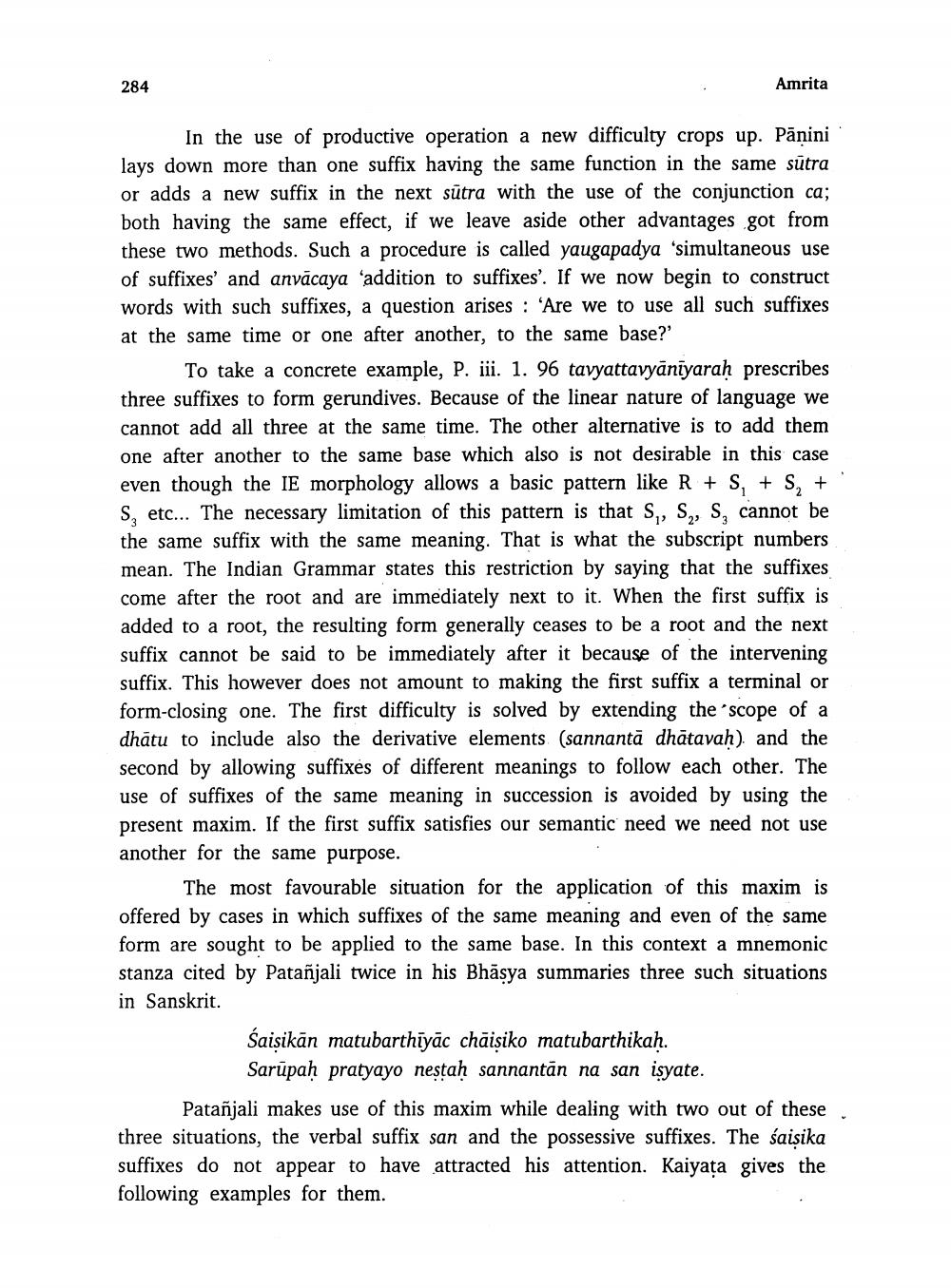________________
284
Amrita
In the use of productive operation a new difficulty crops up. Pāṇini lays down more than one suffix having the same function in the same sutra or adds a new suffix in the next sūtra with the use of the conjunction ca; both having the same effect, if we leave aside other advantages got from these two methods. Such a procedure is called yaugapadya 'simultaneous use of suffixes' and anvācaya addition to suffixes'. If we now begin to construct words with such suffixes, a question arises : 'Are we to use all such suffixes at the same time or one after another, to the same base?'
To take a concrete example, P. iii. 1. 96 tavyattavyānīyaraḥ prescribes three suffixes to form gerundives. Because of the linear nature of language we cannot add all three at the same time. The other alternative is to add them one after another to the same base which also is not desirable in this case even though the IE morphology allows a basic pattern like R + S + S + S, etc... The necessary limitation of this pattern is that S, S,, S, cannot be the same suffix with the same meaning. That is what the subscript numbers mean. The Indian Grammar states this restriction by saying that the suffixes come after the root and are immediately next to it. When the first suffix is added to a root, the resulting form generally ceases to be a root and the next suffix cannot be said to be immediately after it because of the intervening suffix. This however does not amount to making the first suffix a terminal or form-closing one. The first difficulty is solved by extending the scope of a dhātu to include also the derivative elements (sannantā dhātavah). and the second by allowing suffixes of different meanings to follow each other. The use of suffixes of the same meaning in succession is avoided by using the present maxim. If the first suffix satisfies our semantic need we need not use another for the same purpose.
The most favourable situation for the application of this maxim is offered by cases in which suffixes of the same meaning and even of the same form are sought to be applied to the same base. In this context a mnemonic stanza cited by Patañjali twice in his Bhāsya summaries three such situations in Sanskrit.
Saisikān matubarthiyāc chāisiko matubarthikah. Sarūpah pratyayo nestah sannantān na san isyate.
Patañjali makes use of this maxim while dealing with two out of these three situations, the verbal suffix san and the possessive suffixes. The saisika suffixes do not appear to have attracted his attention. Kaiyata gives the following examples for them.




